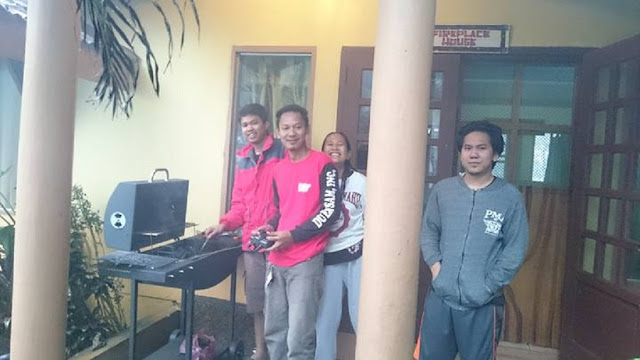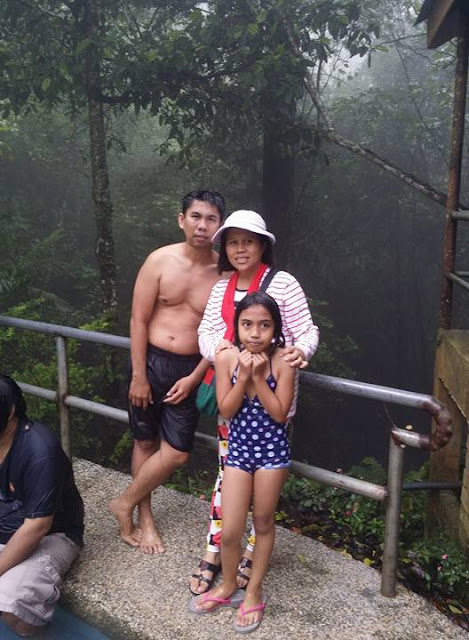Seagull Mountain Resort is one of the many popular destinations in Davao City. It is situated along the Bukidnon-Davao (BUDA) Road in Barangay Lorega, Marilog District, Davao City, and is nestled on a mountain about 4,200 feet above sea level. The Resort is widely known for its cool weather all year round, and thick mountain fog, (even in broad daylight!), that quietly crawls the lush greenery amidst tall Pine trees and wild flowers surrounding the entire area, making it a popular getaway for family outing.
Thursday, January 07, 2016
Wednesday, January 06, 2016
Lifestyle -1
Tuesday, January 05, 2016
Monday, January 04, 2016
Negritos of the Philippines
The Negritos of the Philippines are comprised of approximately twenty-five widely scattered ethnolinguistic groups totaling an estimated 15,000 people. They are located on several major islands in the country: Luzon, Palawan, Panay, Negros, Cebu, and Mindanao. They are assumed to be the aboriginal inhabitants of the archipelago. The religion of most groups remains animistic, often with a thin overlay of Roman Catholic influence. All the Negrito languages are Austronesian, as are all the native languages of the Philippines. The Negrito languages do not form a subfamily among the Philippine Austronesian languages. Rather, they tend to be most closely related to, but usually mutually unintelligible with, the languages of the non-Negrito peoples in their particular geographical areas. All Negrito adults in every area are bilingual, able to converse in and understand the major languages of their non-Negrito neighbors with only minor difficulty. The population of the Negritos has declined greatly since the early Hispanic period (1600) and continues to decline today because of high death rates resulting from encroachment by outsiders, deforestation, depletion of their traditional game resources, and general poverty and disease. These Negroid peoples are phenotypically quite different in appearance from the Mongoloid peoples of the Philippines, who today outnumber the Negritos by 4,000 to 1. In spite of their Negroid appearance, all scholars reject the theory that their ancestors came from Africa. Rather, the accepted theory today is that Philippine Negritos are descendants of groups of Homo sapiens who migrated into the Philippines during the Upper Pleistocene from mainland Southeast Asia, and subsequently developed their phenotypic traits in situ, through processes of microevolution, some 25,000 years ago. All of the Negrito groups are or were hunter-gatherers. Today they are found in various stages of deculturation. Most practice some marginal cultivation themselves, and all groups carry on intense symbiotic relationships with neighboring non-Negrito peoples, trading forest products for cash or starch food (rice or corn), serving as forest guides, and especially working as casual laborers on nearby farms.

Sunday, January 03, 2016
Bagobo Tribe
“Bagobo” comes from “bago” meaning “new, recent” and “obo/obbo/uvu” meaning “growth, grow,” so that the term refers to a recent formation of people along the coast of the Davao Gulf. When the Hinduized peoples from the south brought in Hindu culture during the Sri Vijayan and Majapahit penetration of Mindanao, these migrants mixed with the native population, forming a new society reflected in the name “Bagobo.” The term may loosely apply to the coastal peoples of Davao Gulf, especially those native groups on the western shores of southeastern Davao. These groups include several ethnicities, such as the Tagabawa, Jangan or Attaw, and Tagacaolo. Spanish missionaries and early ethnographers tended to identify them all as one group because they had common articles of material culture, such as dress and ornaments, tools, blades, and musical instruments. Immigrants from other places also tended to include the Manuvu among the Bagobo groups. The ascription is erroneous, for the Manuvu live in the upland areas northwest, north, and northeast of Mount Apo in interior Mindanao. Furthermore, all the abovenamed ethnic groups speak mutually unintelligible languages. The Bagobo are light brown in complexion. Their hair is brown or brownish black, ranging from wavy to curly. The men stand about 158 centimeters tall, the women 147 centimeters tall. Although the face is wide, the cheekbones are not prominent. The eyes are dark and widely set, the eyeslits slanting. The eyebrows are deliberately shaved to a thin line by both male and female. The root of the nose is low, the ridge broad. The lips are full, the chin rounded. Population estimate of the Bagobo in 1988 was 80,000 (NCCP-PACT 1988).
History
The Bagobo were the first ethnic group in Mindanao encountered by the Spaniards at the end of the 19th century. Brisk trade already existed among the various groups and tribes. Horses were used to transport goods to the coast. The Bagobo were excellent riders and showed their pride in this skill by adorning their horses with beads and bangles. Their principal trade item was rice, which they exchanged for lowland goods like salt, fish, clay pottery, and for upland goods like resin, beeswax, and the lumbang fruit which was their source of fuel. From the Muslims they bought iron; they bartered with the Chinese for pots, beads, and other ornaments. Sibulan is the ancient settlement of the Bagobo and was the center of all the Bagobo settlements when the Spaniards came. Datu Manib was the datu of Sibulan and, therefore, the foremost datu among all the other datu. He was between 45 and 50 years old when the Spaniards first came to Sibulan. He was able to trace his genealogy back 11 generations to Saling-olop, a legendary culture hero. Although he cordially received the Spaniards when they arrived, he was later imprisoned for defying the Spanish injunction against human sacrifices and refusing to help them capture a Bagobo fugitive.
Saturday, January 02, 2016
Tasaday Tribe
The Tasaday (tɑˈsɑdɑj) are an indigenous people of the Philippine island of Mindanao. They are considered to belong to the Lumad group, along with the other indigenous groups on the island. They attracted widespread media attention in 1971, when Western scientists reported their discovery, "stone age" technology and complete isolation from Philippine society. They again attracted attention in the 1980s when it was reported that the discovery had been an elaborate hoax, and doubt was raised about their isolation and even about being a separate ethnic group. The issues are still debated. The Tasaday language is distinct from that of neighbouring tribes, and linguists believe it probably split from the adjacent Manobo languages 200 years ago.
In March 1972, another meeting occurred between the Tasaday, Elizalde, and members of the press and media including the Associated Press and the National Geographic Society, this time at the Tasaday's secluded cave home site. This meeting was popularly reported by Kenneth MacLeish in the August 1972 issue of National Geographic, which featured on its cover a photograph by photojournalist John Launois of a Tasaday boy climbing vines.
Since these first meetings and reports, the group was subject to a great deal of further publicity, including a National Geographic documentary, "The Last Tribes of Mindanao" (shown December 1, 1972). The Tasaday became so popular as to attract such famed visitors as Charles A. Lindbergh and Gina Lollobrigida.
Background
Manuel Elizalde was the head of PANAMIN, the Philippine government agency created in 1968 to protect the interests of cultural minorities. He was the son of a wealthy father of Spanish lineage and an American mother. He was a known crony of the late Philippine dictator Marcos. He took credit for discovering the Tasaday, which he did on June 7,[timeframe?] shortly after a local barefoot Blit hunter told him of a sporadic contact over the years with a handful of primitive forest dwellers. He released this to the media a month later, and many excited people began the long task of clearing the thickest forest in the world. Weeks later, visitors were only three hours away when their way was blocked by the PANAMIN guards, who answered to Elizalde alone. Elizalde allowed only a handful of the "most important visitors" to meet them.Introduction of the Tasaday
Elizalde brought the Tasaday to the attention of PANAMIN. With a small group including Elizalde's bodyguard, helicopter pilot, a doctor, a 19-year-old Yale student named Edith Terry, and local tribespeople for interpreting attempts, Elizalde met the Tasaday in an arranged clearing at the edge of the forest in June 1971.In March 1972, another meeting occurred between the Tasaday, Elizalde, and members of the press and media including the Associated Press and the National Geographic Society, this time at the Tasaday's secluded cave home site. This meeting was popularly reported by Kenneth MacLeish in the August 1972 issue of National Geographic, which featured on its cover a photograph by photojournalist John Launois of a Tasaday boy climbing vines.
Since these first meetings and reports, the group was subject to a great deal of further publicity, including a National Geographic documentary, "The Last Tribes of Mindanao" (shown December 1, 1972). The Tasaday became so popular as to attract such famed visitors as Charles A. Lindbergh and Gina Lollobrigida.
Subscribe to:
Posts (Atom)




























































































